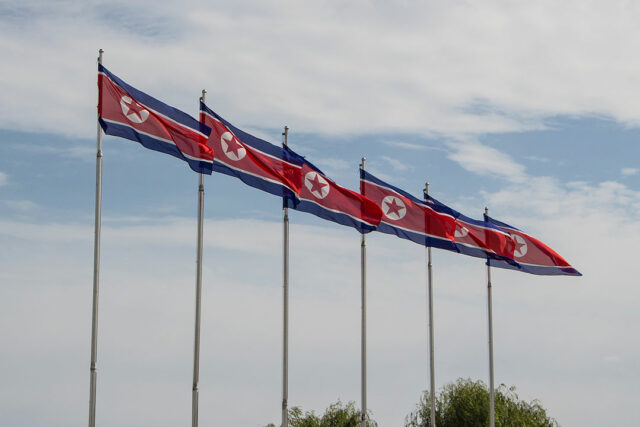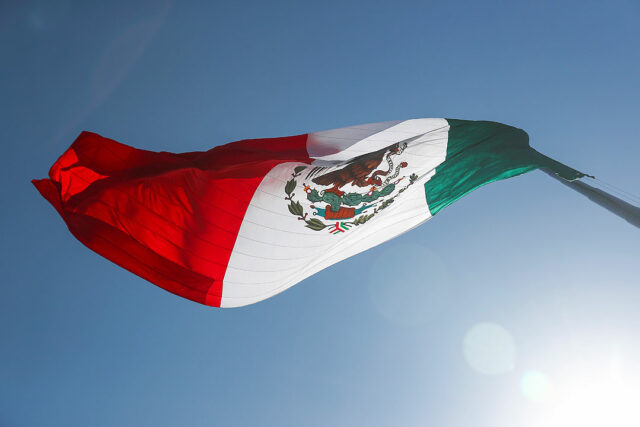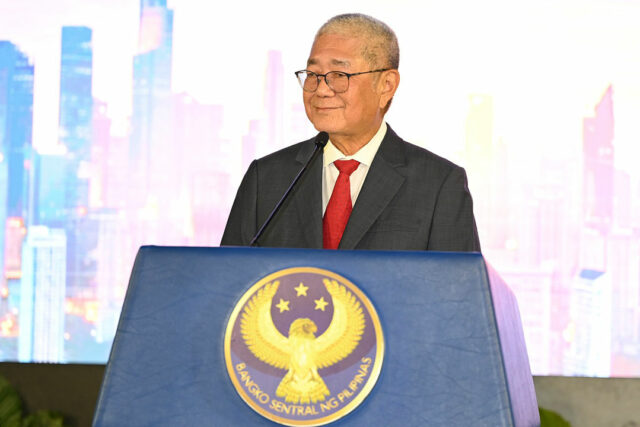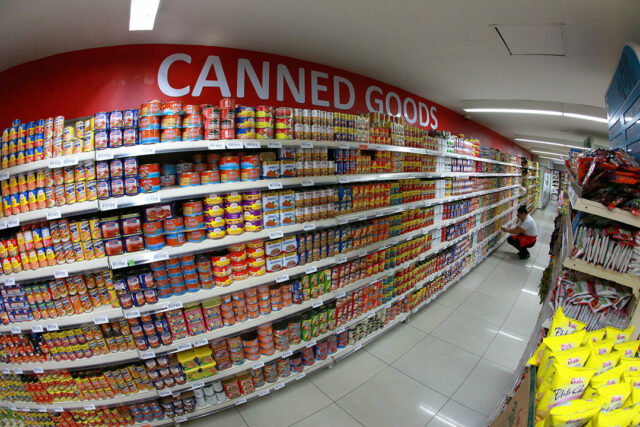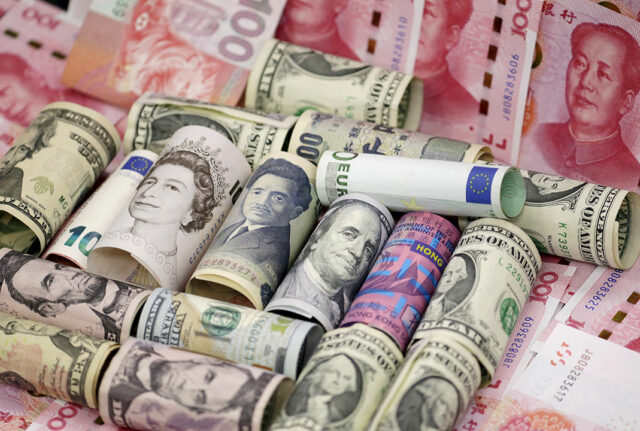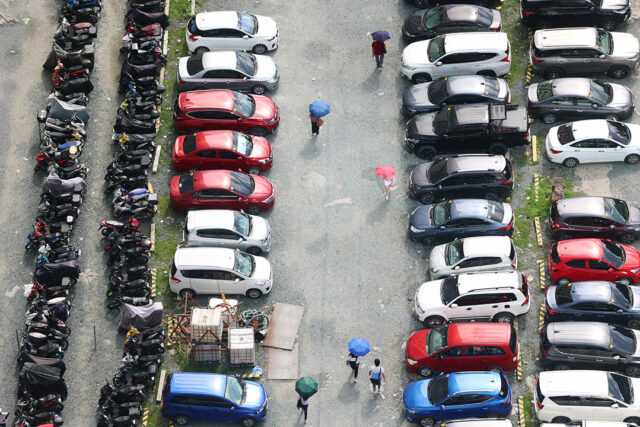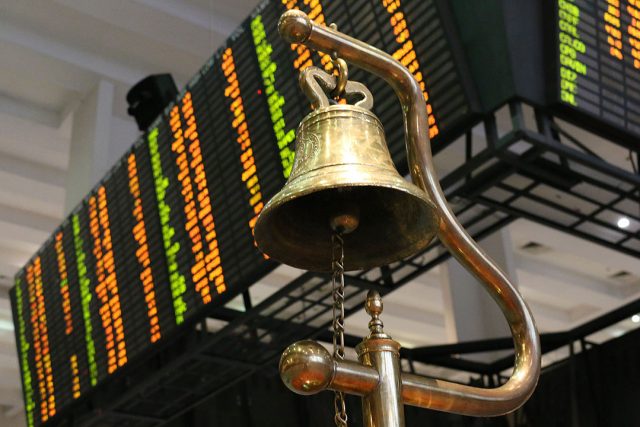By Luisa Maria Jacinta C. Jocson, Reporter
HEADLINE INFLATION may have eased in January amid lower electricity rates and food prices, analysts said.
A BusinessWorld poll of 16 analysts yielded a median estimate of 2.8% for the consumer price index (CPI) in January.
This is within the 2.5%-3.3% forecast of the Bangko Sentral ng Pilipinas (BSP) for the month and the 2-4% target range.
 If realized, January inflation would have eased from 2.9% in December and matched the 2.8% print a year ago.
If realized, January inflation would have eased from 2.9% in December and matched the 2.8% print a year ago.
The Philippine Statistics Authority (PSA) is set to release January inflation data on Feb. 5 (Wednesday).
“We expect headline inflation to ease, driven by lower food price inflation, while a decline in electricity generation rates partly offset a pickup in retail fuel prices,” Nomura Global Markets Research analyst Euben Paracuelles said.
Bank of the Philippine Islands Lead Economist Emilio S. Neri, Jr. said food inflation has been steady “largely due to reports that rice prices have declined versus prior months with favorable supply prospects following the end of El Niño.”
Rice inflation sharply slowed to 0.8% in December from 5.1% in November and 19.6% a year prior.
The PSA earlier noted the possibility of rice inflation turning negative in January.
“We expect headline inflation to decelerate on the back of retail rice prices falling to P37 per kilogram and electricity prices easing,” HSBC economist for ASEAN Aris D. Dacanay said.
Manila Electric Co. lowered the overall rate by P0.2189 per kilowatt-hour (kWh) to P11.7428 per kWh in January from P11.9617 per kWh in December.
OIL PRICE HIKES
On the other hand, analysts flagged risks that could stoke inflation, such as fuel costs.
“While electricity rates eased on the back of lower generation charges, domestic fuel prices were up over three straight weeks in January due to higher global oil prices,” Sarah Tan, an economist from Moody’s Analytics, said.
In January, pump price adjustments stood at a net increase of P2.65 a liter for gasoline, P4.80 a liter for diesel and P3.80 a liter for kerosene.
Mr. Dacanay said inflation could have eased further if not for other non-core components.
“For instance, retail fuel prices continue to climb due to a strong US dollar, while pork prices jumped as the increase in African Swine Flu cases took a toll on supply,” he said.
“Higher prices were observed for fuel as well as for key food items such as vegetables, meat, fish, and fruits,” Chinabank said.
Food inflation could have also reflected the impact of storm damage late last year, Ms. Tan said.
“Flood damage knocked food production in the final months of 2024, stoking inflation. These upward price pressures are expected to linger into the opening month of the new year,” she added.
Several storms hit the country in the fourth quarter, leading to billions of pesos worth of agricultural damage. The combined effects of tropical cyclones Kristine and Leon resulted in P9.81 billion in agriculture losses.
“Further, water rates were also upwardly revised as of Jan. 1, which will add to households’ and businesses’ utility bills through the year,” Ms. Tan said.
“The higher water rates are said to contribute to the expansion of water service and infrastructure projects,” she added.
The Metropolitan Waterworks and Sewerage System Regulatory Office had approved a P5.95-per-cubic-meter increase for Manila Water Co., Inc. and P7.32 per cubic meter for Maynilad Water Services, Inc., starting January.
“The annual adjustment in water rates in Metro Manila, along with the increase in sin taxes also added to upward price pressures,” Chinabank Research said.
INFLATION OUTLOOK
In the coming months, inflation is seen to continue settling within the 2-4% target range.
“Looking ahead, inflation will likely remain within target, barring new shocks,” Chinabank Research said.
The BSP projects inflation to average 3.3% this year. Even accounting for risks, it sees inflation potentially hitting 3.4%.
“On a monthly basis, we may see headline inflation bottom out at 2.4% year on year in February and a slight decline from December… as heavyweight CPI housing rental, electricity, water, and gas ease to less than 2%,” Ruben Carlo O. Asuncion, chief economist at Union Bank of the Philippines, said.
“Moving forward, we expect the government’s ongoing efforts to manage rice supply to bring overall inflation down in the next few months,” Mr. Dacanay said.
The government implemented a maximum suggested retail price on imported rice in Metro Manila in late January to address elevated prices.
The within-target inflation outlook will allow the BSP to continue its rate-cutting cycle, analysts said.
‘This will support further monetary policy easing in the Philippines, reducing the pressure on the budgets of households and businesses,” Ms. Tan said.
“This favorable inflation outlook, along with the weaker-than-expected GDP growth in the fourth quarter, supports the case for another interest rate cut by the BSP in its upcoming policy meeting this month,” Chinabank Research said.
Security Bank Corp. Vice-President and Research Division Head Angelo B. Taningco said he expects the BSP to deliver a 25-basis-point (bp) rate cut at its first meeting for the year as inflation is likely within the 2-4% target range in January and fourth-quarter growth was weaker than expected.
Sun Life Investment Management and Trust Corp. economist Patrick M. Ella said the latest growth outturn will be a “larger consideration” for the BSP.
The Philippine economy grew by a slower-than-expected 5.2% in the fourth quarter, bringing full-year 2024 growth to 5.6%. This falls short of the government’s 6-6.5% target.
“We think the BSP will have to cut 25 bps for the first Monetary Board meeting this year. The weakness in consumption and private investments points to the need for support from the monetary policy side at the moment,” Mr. Ella said.
“This may lead to a weaker peso in the near term but the pressing need to support growth is immediate,” he added.
However, analysts also said that the BSP’s easing cycle may be derailed as risks persist.
Ms. Tan said the pace of further easing may be more moderate than last year.
“We’re looking at two quarter-point rate cuts by December, with the first coming through in mid-2025 at the earliest,” she said.
“The BSP will be prudent in monitoring global developments that could reinflate inflation and weaken the strength of the peso,” she added.
Mr. Neri likewise expects the central bank to deliver just 50 bps worth of cuts this year.
“That said, we continue to see risks that could limit the BSP’s rate cuts to just 50 bps this year,” he said.
“If BSP becomes too aggressive with easing, the peso could be subject to sizable exchange market pressure, which, in turn, could fuel inflation expectations.”
The peso has been under pressure in the past few months, sinking to the record-low P59-per-dollar level thrice in 2024.
Ms. Tan expects the Monetary Board to keep rates steady at its Feb. 13 meeting as it will likely remain cautious.
BSP Governor Eli M. Remolona, Jr. has signaled the possibility of up to 50 bps worth of rate cuts this year.




